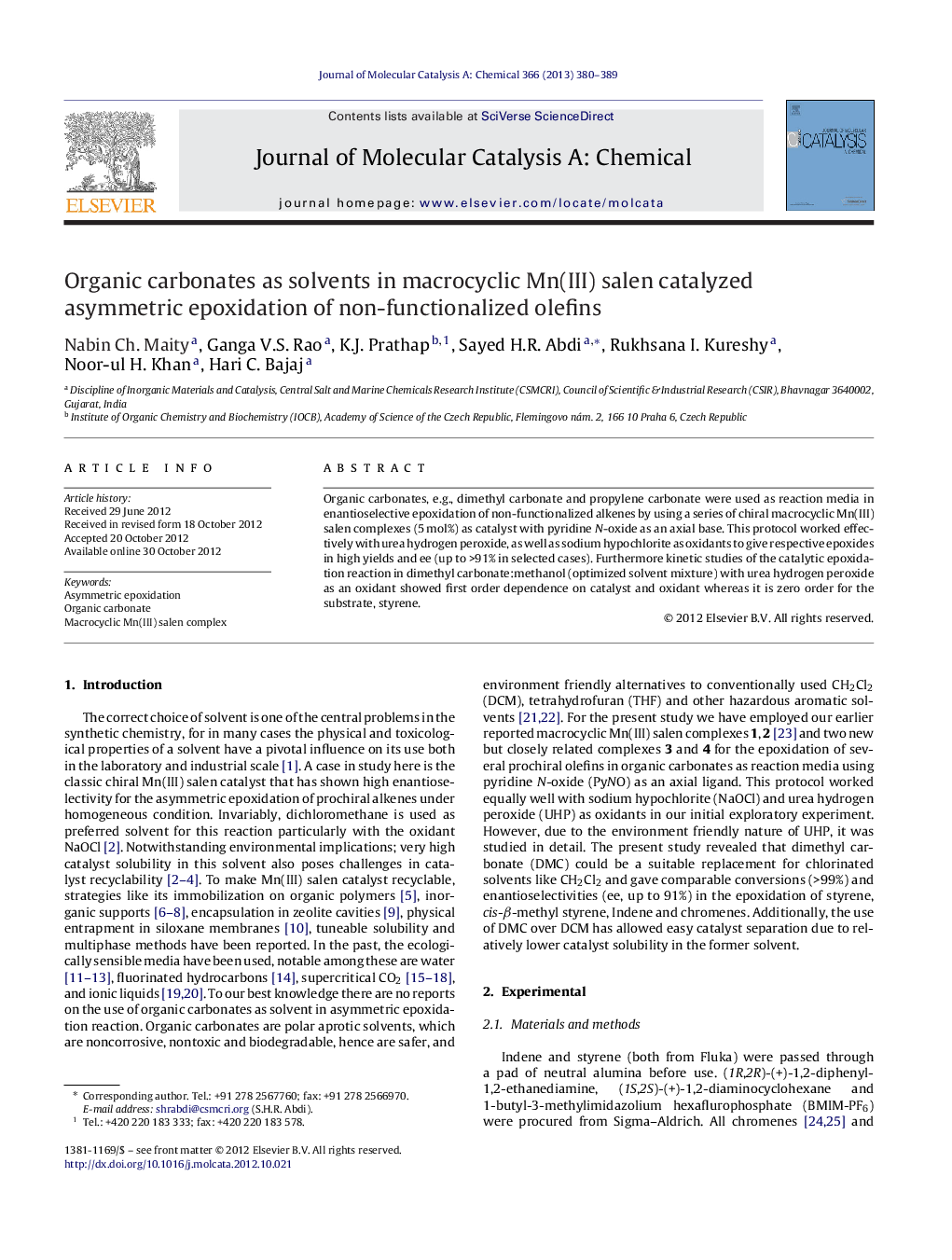| Article ID | Journal | Published Year | Pages | File Type |
|---|---|---|---|---|
| 65980 | Journal of Molecular Catalysis A: Chemical | 2013 | 10 Pages |
Organic carbonates, e.g., dimethyl carbonate and propylene carbonate were used as reaction media in enantioselective epoxidation of non-functionalized alkenes by using a series of chiral macrocyclic Mn(III) salen complexes (5 mol%) as catalyst with pyridine N-oxide as an axial base. This protocol worked effectively with urea hydrogen peroxide, as well as sodium hypochlorite as oxidants to give respective epoxides in high yields and ee (up to >91% in selected cases). Furthermore kinetic studies of the catalytic epoxidation reaction in dimethyl carbonate:methanol (optimized solvent mixture) with urea hydrogen peroxide as an oxidant showed first order dependence on catalyst and oxidant whereas it is zero order for the substrate, styrene.
Graphical abstractFigure optionsDownload full-size imageDownload high-quality image (183 K)Download as PowerPoint slideHighlights► Use of organic carbonates as a green solvent, in place of chlorinated solvents. ► Easily prepared macrocyclic Mn(III) salen complexes were used as enantioselective epoxidation. ► Catalysts were easily recyclable up to 4 cycles with retained performance.
